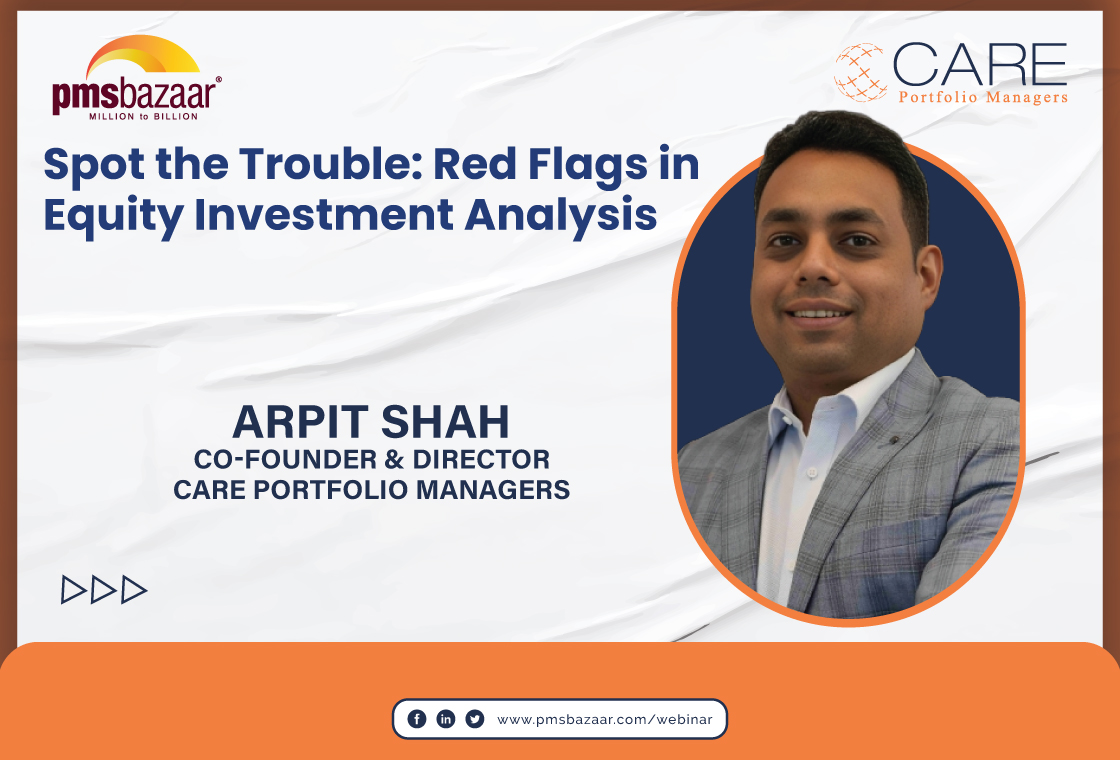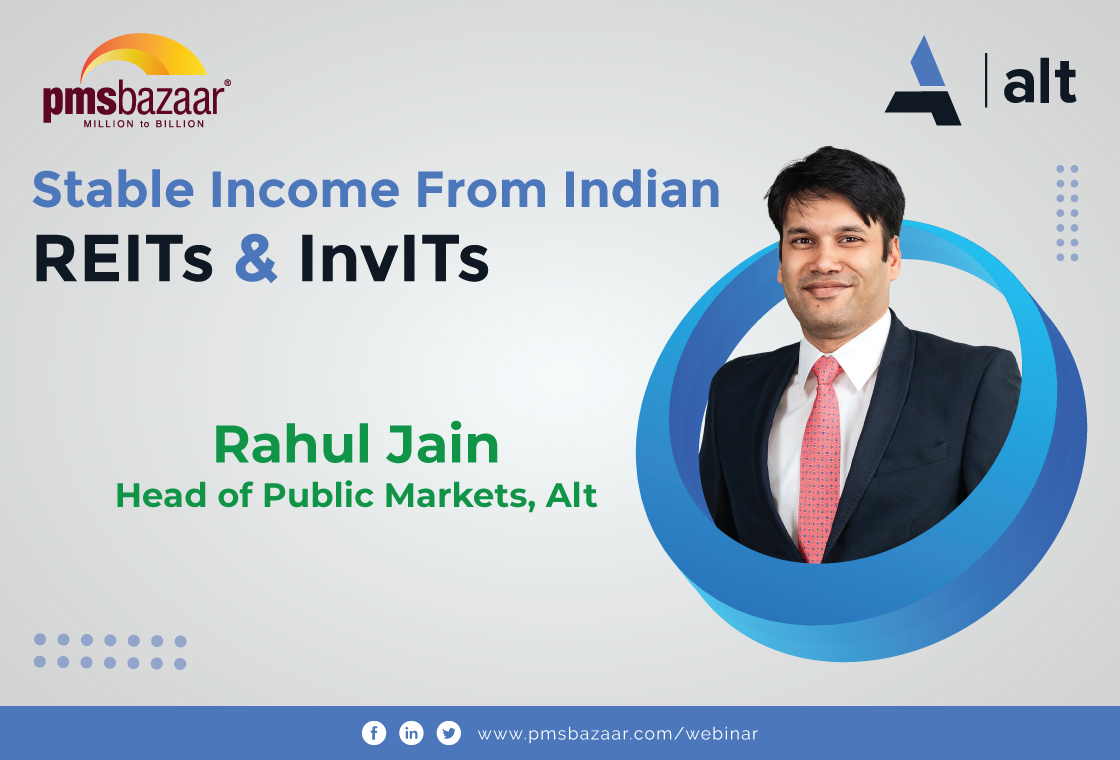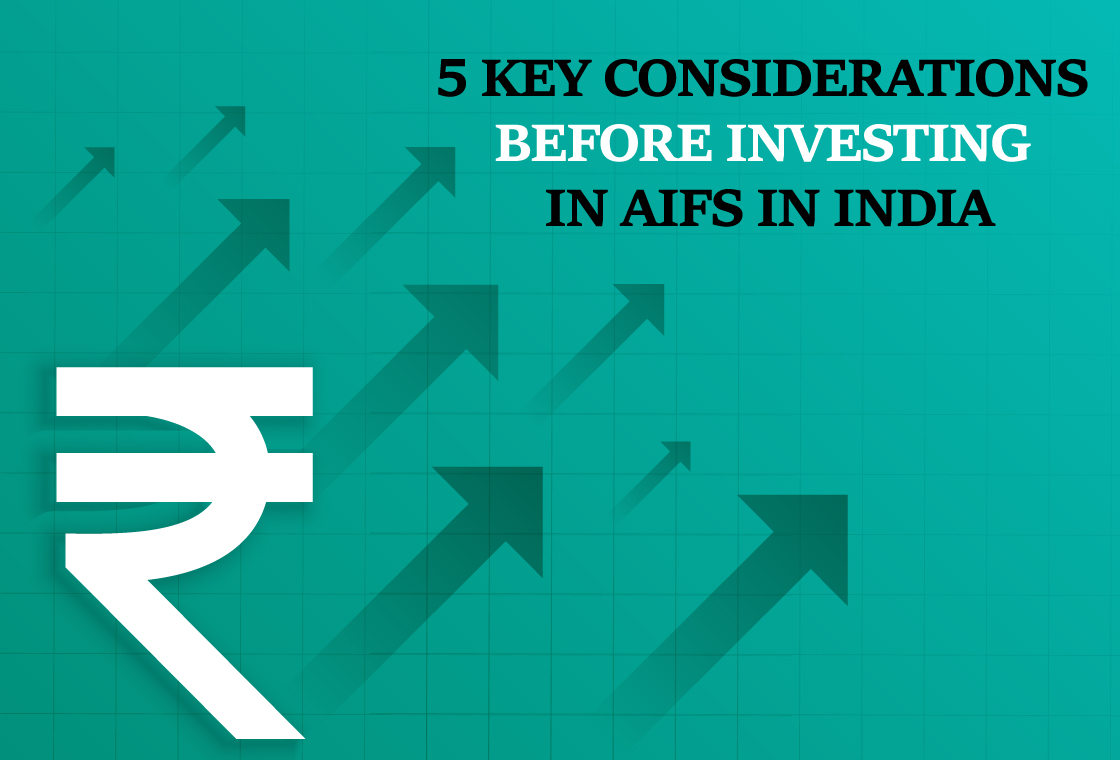The recent PMS Bazaar webinar, "The Secret Sauce in Quant Investing," featuring Estee Advisors’ CEO Sandeep Tyagi, explored key insights into this often-complex investment strategy. He points out that while this approach is relatively new in India, quant investing boasts a robust history globally, supported by decades of research and established methodologies.

Sandeep Tyagi emphasized the importance of systematic, data-driven approaches over short-term predictions, advocating for a long-term vision. The webinar delved into market trends, asset segmentation, and risk management, highlighting the benefits of diversification and quantitative investing for navigating market dynamics and achieving sustained returns.
Key discussion points in this webinar blog are
- Timing the market
- Balanced approach to investment
- Market segmentation: weighing the risks
- Creating an edge through quant investing
- Benefits of quantitative investing
- Quant funds viability
- Measuring risk in quantitative investments
- Investment strategy in the Long Alpha fund
- Balancing quantitative and qualitative information
- Understanding quant funds’ performance
Quantum investing, often shrouded in mystery, is actually more systematic and transparent than meets the eye. Sandeep Tyagi sheds light on this domain, dispelling the notion that it's a secret club only accessible to the chosen few. Tyagi addressed investors' key concerns, like the ideal time to invest in equities and strategies to gain an advantage. His central message? “Time in the market, not market timing”. That is, long-term investment vision trumps futile attempts to predict short-term market fluctuations. This approach, supported by analytical models and historical data, emphasises staying invested for the long haul, rather than getting caught up in the noise of market timing.
Tyagi presented market trends across various durations, emphasizing that uncertainty diminishes with longer investment periods. Daily fluctuations showed a 54% chance of positive returns, while the likelihood soared to a remarkable 98% for five-year investments, highlighting the importance of long-term investment horizons.
Delving deeper, the presentation analysed current market scenarios using metrics like Price-to-Earnings ratios (P.E.) for Nifty, mid-cap, and small-cap segments. Tyagi’s analysis indicated an expensive market valuation but also highlighted nuances like small-caps approaching peak returns compared to large-caps. Graphical representations showcased the cyclical nature of market valuations, depicting fluctuations between low and high P.E. scenarios, and their correlation with future returns. Tyagi concluded that while the market may not be undervalued currently, it remains in a favourable position, far from overvaluation.
As Tyagi reveals, quant investing is not about hidden formulas, but a long-term commitment built on calculated strategies and unwavering discipline. It's about looking beyond the short-term noise and focusing on the multi-decade journey.
Timing the market
Tyagi delves into the intricacies of market timing, highlighting the difficulty of predicting opportune investment moments. He emphasises the historical correlation between market lows and subsequent high returns over time. Using the example of Nifty Mid Cap and Small Cap, Tyagi demonstrates the relationship between low price-to-earnings ratios and subsequent year's higher returns. However, identifying these optimal moments is a challenge due to the unpredictable nature of market movements. The current scenario, with valuations near the median, further underscores the difficulty investors face in timing their market entry for maximum returns.
Balanced approach to investment
Tyagi, comparing the market to the parable of the blind men and the elephant, emphasises a balanced investment approach. He debunks the notion of a single, consistently superior investment strategy. Examining popular strategies like momentum, value, and sectoral preferences, he exposes their inconsistent performance, highlighting the need for diversification. A diversified portfolio, encompassing multiple factors, sectors, and market capitalizations, mitigates the risk of missing out on favourable returns, regardless of the year.
Weighing the risks in the market
Tyagi analyses various market cap indices, revealing differing performance trends. Small caps typically outperform but exhibit periods of significant underperformance such as 2008, 2011, 2018 and 2022, highlighting their inherent volatility and associated risks. Conversely, large caps displayed robust performance in 2022, underlining the unpredictability and cyclical nature of market segments.
Creating an edge through quant investing
Tyagi emphasises the value of a balanced portfolio and the advantages of quantitative investing. He describes Estee’s meticulous methodology, which involves evaluating over 130 attributes across the top 500 companies. This comprehensive analysis, incorporating various factors, culminates in a focused yet diversified portfolio. He asserts that this systematic approach has historically yielded superior returns, citing the Long Alpha product's performance as proof.
Benefits of quantitative investing
Tyagi presented a comprehensive analysis of the Long Alpha product, which consistently outperformed market benchmarks. He compared the S&P 500 and Long Alpha returns, showcasing the latter's significant advantage. The historical data demonstrated the model's efficacy, delivering returns approximately 5% better than the Nifty index with a lower drawdown, making it a compelling investment alternative.
Unravelling the quantitative approach
Tyagi outlines a multifaceted portfolio construction approach, emphasizing quantitative analysis of macroeconomic factors, dynamic factors, index information, institutional holdings, and technical indicators. He suggests this data-driven strategy, concentrated in around 70 stocks, can generate higher returns than inherent market risks.
Quant funds viability
To address concerns about the novelty of quant-based funds, Tyagi emphasises their consistent performance and systematic nature. He points out that while this approach is relatively new in India, quant investing boasts a robust history globally, supported by decades of research and established methodologies. He contrasts fundamental analysis, susceptible to biases and uncertainties, with quant-based strategies, offering investors a more structured and data-driven alternative.
Measuring risk in quantitative investments
Tyagi stressed the importance of quantitatively measuring risk in investments through various lenses: factor exposure, sectoral diversification, and historical variability. This ensures the portfolio maintains a balanced approach avoiding overreliance on any specific factor or strategy. KY metrics, like the Sharp ratio, gauge the return-to-risk ratio, offering insights into the risk-adjusted performance of funds
Ensuring liquidity in the portfolio
Tyagi addressed liquidity concerns by highlighting the accessibility of each portfolio. Investors in the Long Alpha portfolio enjoy instant access, while the I-alpha portfolio, involving monthly futures investments, permits exit only at month-end to manage potential risks associated with futures spread convergence and divergence. Any exits mid-month might incur costs due to convergence and divergence of future spreads.
Investment strategy in the Long Alpha Fund
Tyagi highlighted the role of quantitative models, adopted in Long Alpha Fund, in rebalancing portfolios within various investment strategies. Also, depending on the strategies, rebalancing frequencies range from daily to annually. He addressed the process of transitioning from existing portfolios to new models, emphasising cost considerations based on investment size and adjustments to churn rates. The Long Alpha portfolio undergoes monthly rebalancing, while the I-alpha portfolio engages in daily trading, representing approximately 1% of Nifty's daily volume.
Balancing quantitative and qualitative information
Tyagi emphasised the importance of quantitative metrics in stock selection, favouring them over qualitative assessments. He acknowledged the existence of qualitative data like analyst recommendations and social media sentiments but stressed the need to convert them into quantifiable data for a more objective analysis. This systematic approach, where sentiments are quantified to create a continuous and structured evaluation, eliminates qualitative biases.
Understanding the quant funds’ performance
Tyagi emphasized that the performance of quant funds hinges on their applied strategies. While momentum-focused funds may thrive during bull markets, they could underperform significantly during corrections. Balanced portfolios, on the other hand, might underperform during market dislocations but tend to recover well once patterns re-emerge.
He emphasised proper asset allocation for investing in quant-based funds during high markets. He highlighted that the Long Alpha product's 100% equity exposure doesn't involve asset allocation or market timing. Instead, he stressed the importance of individual investors determining their risk tolerance and setting appropriate asset allocations aligned with it.
Sandeep Tyagi covered all the topics mentioned above in-depth and then took audience questions to round out the session. For further insights, watch the recording of this insightful webinar through the appended link below:
Get access to rich data and analytics of PMS & AIF by subscribing to us. Join the 55000+ investors & experts now: Subscribe NOW
Recent Blogs
.jpg)
Passively Active Investing — A Modern Investor’s Lens on ETF-Based PMS
PMS Bazaar recently organized a webinar titled “Passively Active Investing — A Modern Investor’s Lens on ETF-Based PMS,” which featured Mr. Karan Bhatia, Co-Founder and Co-Fund Manager , Pricebridge Honeycomb ETF PMs. This blog covers the important points shared in this insightful webinar.

Spot the Trouble: Red Flags in Equity Investment Analysis
PMS Bazaar recently organized a webinar titled “Spot the Trouble: Red Flags in Equity Investment Analysis,” which featured Mr. Arpit Shah, Co-Founder & Director, Care Portfolio Managers. This blog covers the important points shared in this insightful webinar.

Long-Only AIFs Rebound Sharply in October; Long-Short Strategies Lag Despite Lower Volatility
106 long-only AIFs averaged 3.68% vs 32 long-short AIFs at 2.7%; only 24–31% of funds beat key indices

Markets log strongest monthly gains in 7 months; PMS performance turns near-uniform in October
Nifty 50 TRI gained 4.62%, BSE 500 TRI rose 4.27%; 415 of 427 equity PMSes ended positive

How SMEs are Shaping India’s Investment Landscape?
PMS Bazaar recently organized a webinar titled “How SMEs are Shaping India’s Investment Landscape?” which featured Mr. Shrikant Goyal, Fund Manager, GetFive Opportunity Fund.

Stable Income from Indian REITs and InvITs
PMS Bazaar recently organized a webinar titled “Stable Income from Indian REITs and InvITs,” which featured Mr. Rahul Jain, Head of Public Markets, Alt.

5 Key Considerations Before Investing in AIFs in India
Alternative Investment Funds (AIFs) have emerged as a compelling option for sophisticated investors seeking diversification and potentially superior returns. But venturing into AIFs requires a clear understanding of their unique characteristics that go beyond simply knowing what they are and their categories.

How AIF can help in diversification?
Traditionally, Indian investors have relied on a mix of stocks and bonds to build their wealth. While this approach offers diversification, it can still leave your portfolio vulnerable to market fluctuations. Enter Alternative Investment Funds (AIFs), a dynamic asset class gaining traction for its ability to unlock diversification beyond the realm of conventional options.

